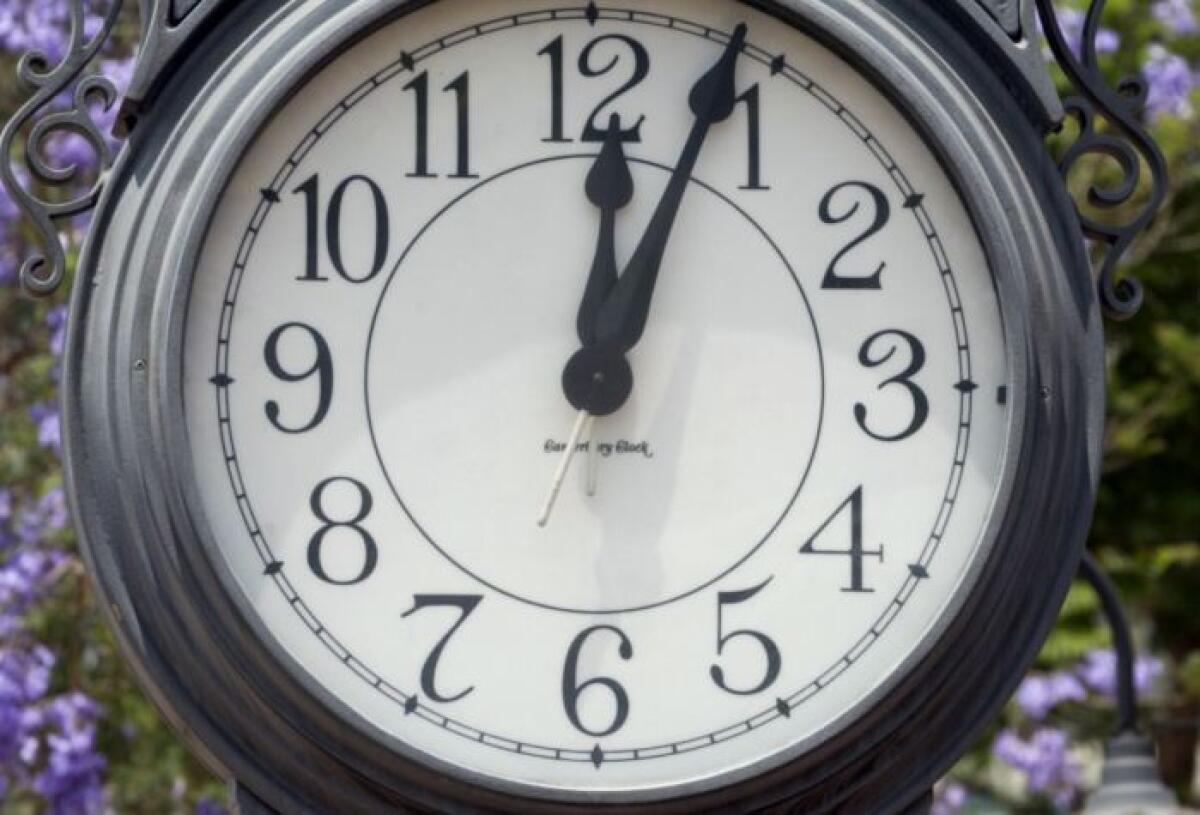‘Leap second’: Why June 30 will have one extra second

Thanks to a leap second, June 2015 will be one second longer than usual.
On June 30, the world will receive a gift of time: a single, extra second known as a “leap second.”
At that moment, the official atomic clocks that keep Universal Coordinated Time will mark the time as 23h 59m 59s, followed by the leap second 23h 59m 60s. July 1 will continue as usual, beginning with 0h 0m 0s.
Leap years come like clockwork every fourth calendar year, but leap seconds are less predictable. The June 30, 2015, leap second is the 26th time that an extra second has been tacked on to a day since atomic clocks began governing our time in 1967.
The June 30 leap second was decreed in January by astronomers at the International Earth Rotation and Reference Systems Service in Paris, who measure Earth’s rotation and compare it with the time kept by atomic clocks.
As the Los Angeles Times reported at the time of the announcement, the leap second is designed to keep astronomical time in sync with atomic time.
The international timekeeping community has two ways of measuring the passing of our days. Astronomical time is based on how long it takes Earth to make one complete spin on its axis. Scientists keep track of this by aiming a network of radio telescopes at a distant quasar.
Atomic time, on the other hand, defines a second as exactly 9,192,631,770 oscillations of a cesium-133 atom. This is what determines the time that displays on your computer or cellphone.
When the 13th General Conference on Weights and Measures came up with atomic time in 1967, it was designed to be in sync with astronomical time. But it hasn’t always worked out that way.
The trouble is that while atomic clocks keep nearly perfect time, Earth does not.
It turns out all kinds of events affect the speed of the Earth’s rotation, including large weather systems, atmospheric winds and even the changing of the seaons.
John Lowe, who works at the National Institute of Standards and Technology in Boulder, Colo., explained that as Earth spins on its axis, it wobbles with the jerky motions of a poorly balanced car tire. That wobbling often increases in winter, when ice and snow build up on the mountains of the northern hemisphere, where the bulk of the planet’s land mass is concentrated.
“It’s like a skater with her arms out,” Lowe told The Times. “That buildup slows the earth down, and when it melts, it’s like the skater has pulled her arms back.”
The astronomers at the International Earth Rotation and Reference Systems Service keep track of the difference between astronomical time and atomic time. They call for a leap second to be added whenever Earth’s observed position is on track to be out of sync with UTC time by more than 0.9 of a second. Leap seconds traditionally are added on June 30 or Dec. 31.
Because they are unpredictable, leap seconds can cause headaches for tech companies who cannot build them into their code the way they do with leap years. In the past, LinkedIn, Google and Reddit have all experienced problems caused by leap seconds.
In addition, it is not clear that leap seconds are really essential. Even if the difference in astronomical time and atomic time grew by one second every year, in 100 years the gap would be less than two minutes. In 1,000 years, it would be off by less than 17 minutes.
But it could be unsettling. Eventually. And besides, couldn’t we all use a little more time?
Science rules! Follow me @DeborahNetburn and “like” Los Angeles Times Science & Health on Facebook.
ALSO:
New firefly found in SoCal -- Wait, we have fireflies?
NASA spies strange lone ‘pyramid’ on dwarf planet Ceres
Glacial earthquakes help researchers track massive ice loss







